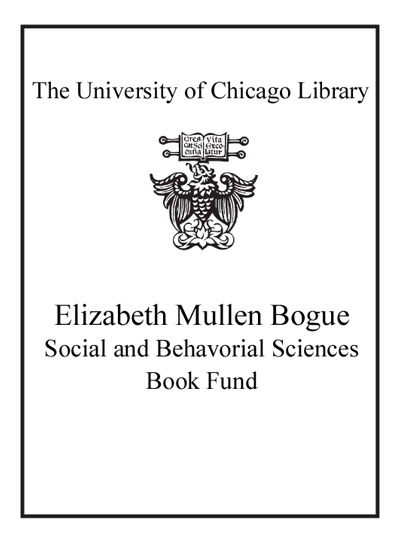Assessing the quality of survey data /
Saved in:
| Author / Creator: | Blasius, Jörg, 1957- |
|---|---|
| Imprint: | London ; Thousand Oaks, Calif. : Sage Publications, 2012. |
| Description: | xi, 174 p. : ill. ; 25 cm. |
| Language: | English |
| Subject: | |
| Format: | Print Book |
| URL for this record: | http://pi.lib.uchicago.edu/1001/cat/bib/8689370 |
Table of Contents:
- About the authors
- List of acronyms and sources of data
- Preface
- Chapter 1. Conceptualizing data quality: Respondent attributes, study architecture and institutional practices
- 1.1. Conceptualizing response quality
- 1.2. Study architecture
- 1.3. Institutional quality control practices
- 1.4. Data screening methodology
- 1.5. Chapter outline
- Chapter 2. Empirical findings on quality and comparability of survey data
- 2.1. Response quality
- 2.2. Approaches to detecting systematic response errors
- 2.3. Questionnaire architecture
- 2.4. Cognitive maps in cross-cultural perspective
- 2.5. Conclusion
- Chapter 3. Statistical techniques for data screening
- 3.1. Principal component analysis
- 3.2. Categorical principal component analysis
- 3.3. Multiple correspondence analysis
- 3.4. Conclusion
- Chapter 4. Institutional quality control practices
- 4.1. Detecting procedural deficiencies
- 4.2. Data duplication
- 4.3. Detecting faked and partly faked interviews
- 4.4. Data entry errors
- 4.5. Conclusion
- Chapter 5. Substantive or methodology-induced factors? A comparison of PCA, CatPCA and MCA solutions
- 5.1. Descriptive analysis of personal feelings domain
- 5.2. Rotation and structure of data
- 5.3. Conclusion
- Chapter 6. Item difficulty and response quality
- 6.1. Descriptive analysis of political efficacy domain
- 6.2. Detecting patterns with subset multiple correspondence analysis
- 6.3. Moderator effects
- 6.4. Conclusion
- Chapter 7. Questionnaire architecture
- 7.1. Fatigue effect
- 7.2. Question order effects
- 7.3. Measuring data quality: The dirty data index
- 7.4. Conclusion
- Chapter 8. Cognitive competencies and response quality
- 8.1. Data and measures
- 8.2. Response quality, task simplification, and complexity of cognitive maps
- 8.3. Conclusion
- Chapter 9. Conclusion
- References
- Index

